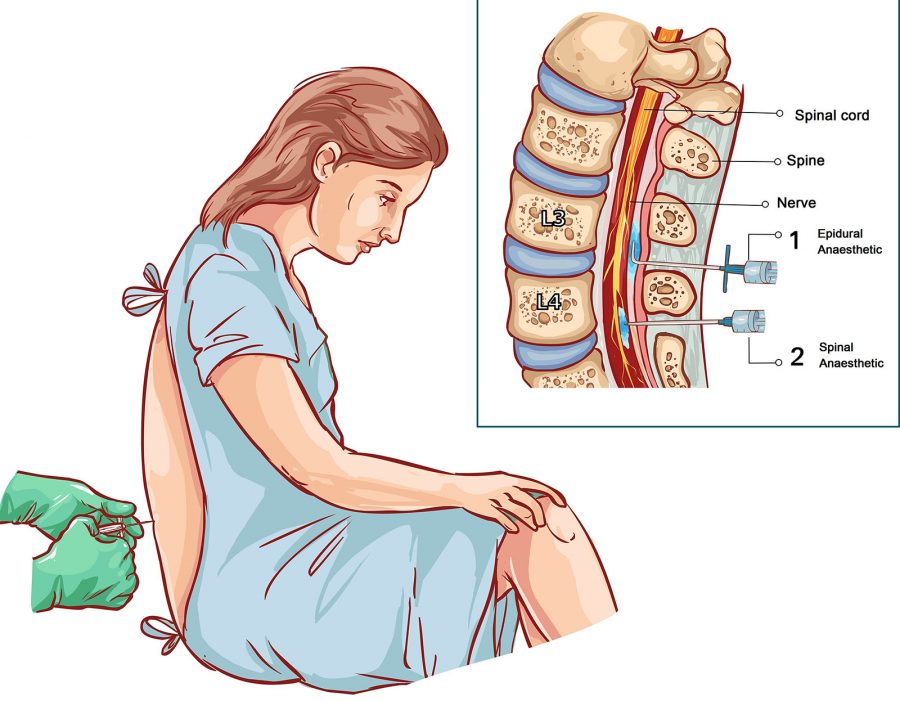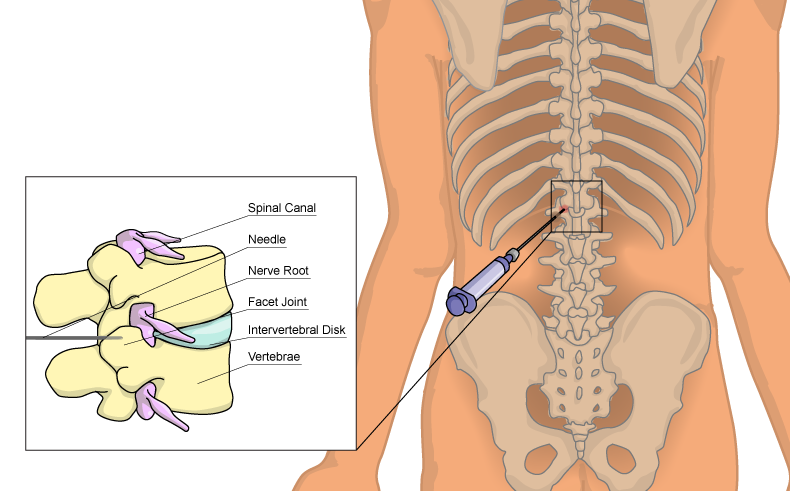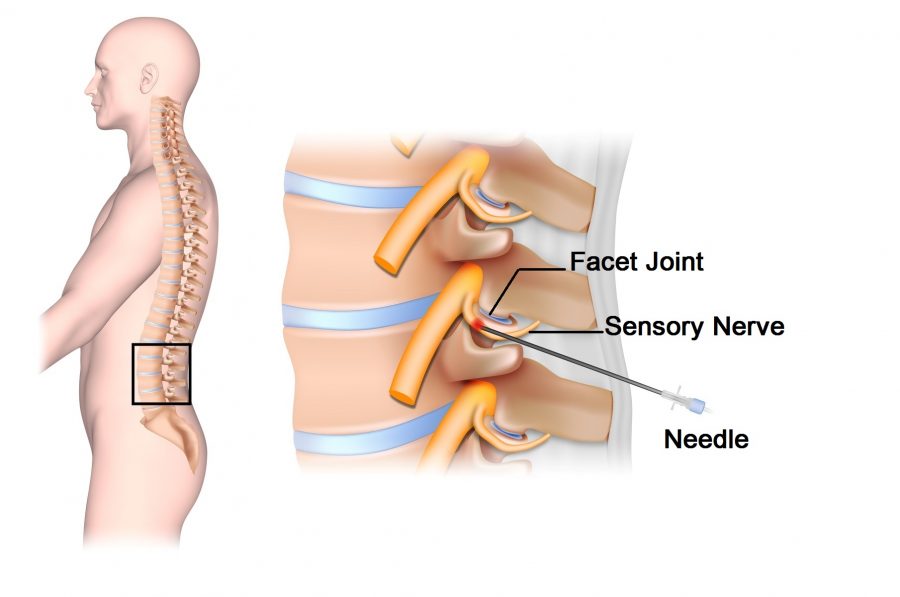Pain in the neck or anywhere on the spine can make it difficult to do even simple activities. The spinal injection for pain can provide temporary relief and is also used as a diagnostic procedure to help pinpoint the source of pain. It is a simple procedure performed by a physician when more conservative treatments fail.
Following is a discussion of the spinal injection procedure and the types of injections available today.
What is a Spinal Injection?
A spinal injection is a minimally invasive treatment for pain management. It is a simple procedure in which a steroid injection mixture, consisting of a steroid and/or anesthetic and sometimes a numbing agent, is delivered to the area of the spine believed to be the source of pain.

The steroid or cortisone and/or anesthetic medication reduces inflammation, thus providing pain relief. The anesthetic drug is administered in a procedure called a nerve block or nerve root block.
It is not always easy to identify the specific source of spinal pain. For this reason, the spinal injection is used as injection therapy for back pain or as a diagnostic injection back pain procedure.
Types of Spinal Injections
Epidural steroid injections and selective nerve block injections are effective because they deliver medication directly to the location in the spine, causing the pain. Steroid medication is an anti-inflammatory drug. In the nerve block spinal injection, the anesthetic works by blocking pain signals.
Following are the common injections for back pain relief.
Often used for the treatment of low back (lumbar region) and leg pain, this injection provides pain relief that can last for one week to a year. The injections are also used to relieve pain in the upper back and neck (cervical region) and the mid-spine area (thoracic region). In most cases, the number of injections in a 12-month period will not exceed three.

- Selective nerve root block (SNRB)
This is an injection of a steroid and numbing agent used to either provide therapeutic relief of back pain or to diagnose the source of pain. Nerve roots that become inflamed and compressed cause the pain, but it may be difficult to identify the precise area of nerve inflammation. If the first injection does not stop the pain, the physician will schedule an additional injection to be administered in a different location of the spine. The treatment in the same area can be administered up to 6 times a year.
The spine consists of a series of paired joints called facet joints. Cartilage provides cushioning tissue that prevents the bones from rubbing together during movement. Nerves run through these joints. Pain occurs when one or more facet joints is injured or cartilage deteriorates during the normal aging process. An injection of a steroid and/or anesthetic into the capsule surrounding the damaged facet joint in the cervical, thoracic or lumbar regions of the spine can bring pain relief. The treatment can be administered up to three times each year.

The sacroiliac (SI) joint is the joint next to the spine that connects the bottom of the spine or sacrum to the hip or pelvic bone. If the joint deteriorates or is injured, pain occurs. An injection of a steroid or anesthetic directly into the SI joint can provide temporary pain relief up to four months. The treatment can be administered up to three times each year.
All types of spinal injections are limited to a certain number per year because frequent use of steroids can lead to side effects. Serious side effects include weakened spinal bones and muscles near the spine. Other side effects include skin thinning, high blood sugar and insomnia, to name a few.
Steroid injections interrupt the natural balance of hormones in the body. Spreading the injections out over a period of time allows hormones to re-balance.
Diagnostic Spinal Injections
Spinal injections can help a physician identify the source of pain. If the injection stops the pain, the physician knows the specific spinal area to further evaluate. Sometimes surgery is needed, but surgery is always a last resort.
A good example is the facet rhizotomy. A cervical fact rhizotomy or a lumbar facet rhizotomy is used as a treatment option after a patient has had several facet joint injections that enabled the physician to pinpoint the source of pain. A facet rhizotomy is a procedure in which nerves are deadened with a heated electrode, giving pain relief for months or years.

Facet Rhizotomy
Easing Pain with Injections
Spinal pain is debilitating, making it difficult to move and manage normal activities. The spinal injection for pain is a low risk procedure that can take place in a medical clinic, hospital or surgical center.
Usually, the patient is asked to try conservative measures first, like over-the-counter pain nonsteroidal anti-inflammatory medications and short periods of bed rest. If these measures do not work, the next step is injection therapy or a diagnostic injection.
